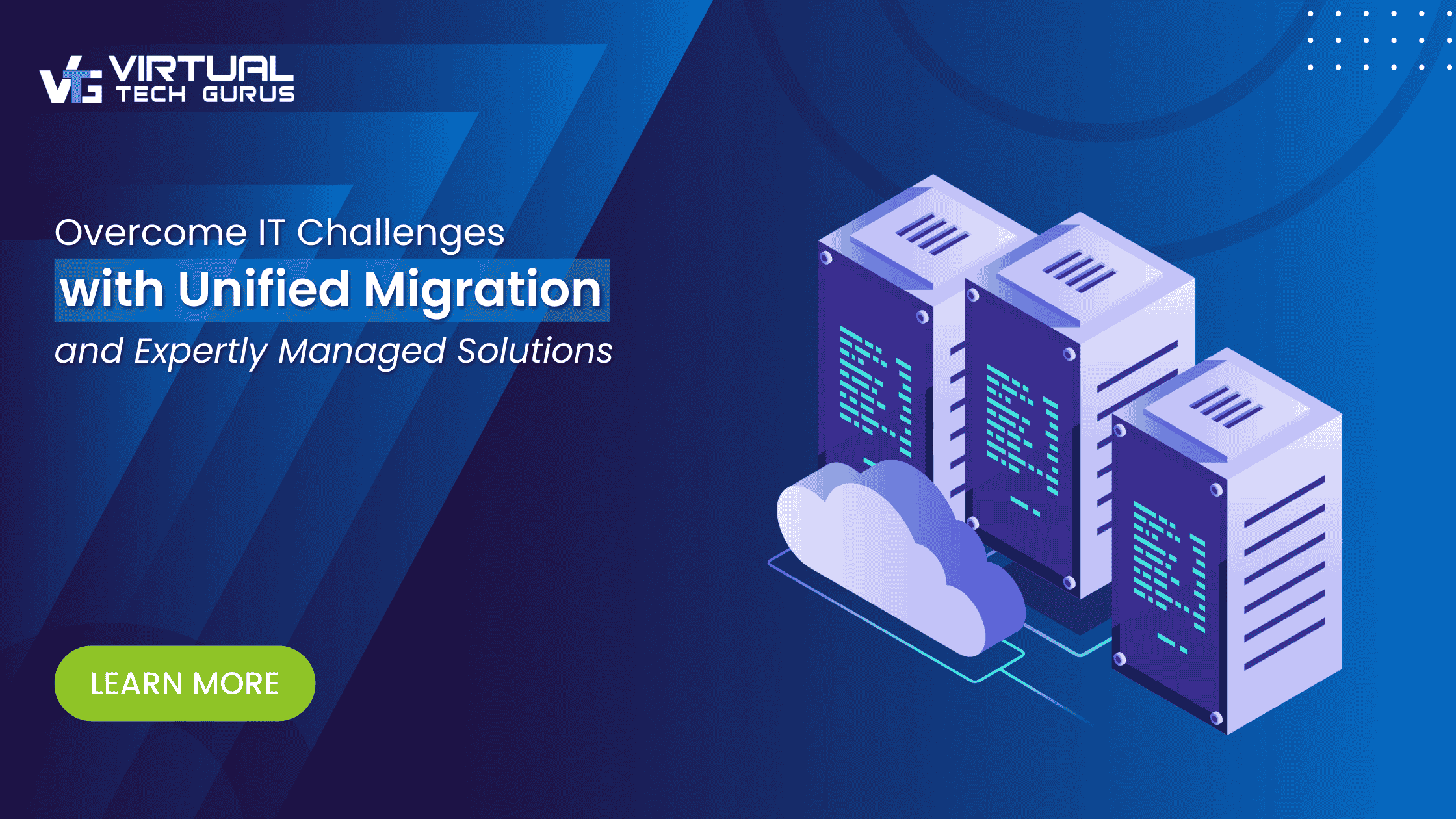The Cloud Advantage: Leveraging Insightful Approaches to Drive Business Growth
Considering a move to the Cloud? According to O’Reilly’s Cloud Adoption report more than 90% of the organizations use the Cloud. Cloud computing eliminates the need for physical data centers, offering on-demand scalability and agility, the key factors in today’s fast paced business world. Let’s delve into some of the Cloud advantages.
- Launch at Lightning Speed: Forget the days of waiting for hardware purchases and installations. Cloud computing facilitates rapid deployment, just like how Spotify was able to scale resources rapidly during surges in new user signups, using cloud. This lets you deploy applications in a flash, freeing you to focus on what matters most – your business.
- Dynamic scaling: Unlike static on-premises infrastructure, the cloud empowers businesses with on-demand scalability. Businesses can readily scale resources up during peak periods and scale down during slower times, optimizing costs with pay-as-you-go model.
- Simplified Budgeting: Cloud computing eliminates upfront costs (hardware, software, maintenance) for traditional IT burdens. With its pay-as-you-go model, you only pay for what you use, simplifying budgeting. This empowers startups like Airbnb to focus on growth, not IT infrastructure.
- Global Collaboration: Cloud storage empowers teams with real-time access to data and applications from anywhere, on any internet-connected device. This promotes seamless collaboration, regardless of location, allowing geographically dispersed teams to work together as if they were in the same room.
- Enhanced Security: Cloud providers invest heavily in cutting-edge security infrastructure and employ top security experts to safeguard their data centers. This can provide a significant security advantage compared to on-premises environments, where businesses may have limited resources for stronger security measures.
Beyond the Benefits: Considerations for Cloud Migration
Cloud computing offers substantial advantages, but a smooth transition necessitates addressing potential challenges:
- Vendor Lock-in: Evaluate providers, choose a cloud provider that uses open standards and allows you to easily move your data if needed. This way, switching providers later won’t be too difficult or expensive.
- Security Concerns: Select a reliable cloud provider with a strong history of security. You should implement stronger security practices to keep your data secure.
- Cost Management: The cloud’s “pay-as-you-go” model can lead to unexpected charges if you’re not careful. Develop a cloud spending plan, track your usage closely, and use tools to optimize your resources so you don’t pay for what you don’t use.
- Integration Complexity: Plan the integration process carefully. Moving existing data and programs requires compatibility with the cloud environment.
- Control: Some businesses may be apprehensive about relinquishing control over their data and infrastructure to a cloud provider. However, cloud providers offer a high degree of control through self-service portals and management tools.
Building Resilient Cloud Applications: 5 Strategies
- Identify and Update Application Tiers and Revisit Key Performance Metrics: Start by examining your applications. Identify distinct tiers like presentation (user interface), business logic (core functionality), and data access. Evaluate their performance needs and update them for the cloud environment.
- Map Resiliency Patterns Applicable to the Application Tier: Research and choose resiliency patterns suited to each tier. Redundancy (having backups), autoscaling (automatic resource adjustment), and failover mechanisms (automatic switching to backups) are common patterns to consider.
- Tailor Reference Architectures to Application Tiers: Utilize reference architectures provided by your cloud provider. These blueprints, aligned with your chosen resiliency patterns, guide you in building resilient cloud applications.
- Define & Prioritize the Right Level of Resiliency According to Business Needs: Assess the importance of each application. Business-critical applications, like sales or finance systems, might require stronger redundancy and disaster recovery plans compared to less critical ones.
- Define a Road Map that Starts with Top-Tier Applications: Develop a migration plan that prioritizes the most critical applications first. This phased migration plan lets you gain experience managing cloud deployments before migrating to less critical ones.
By following these steps, you can build cloud applications that are reliable, scalable, and meet the specific needs of your business.
Migrate to the Cloud with Confidence: Best Practices for a Successful Move
A successful journey to the cloud requires careful planning, but the rewards are significant. Here’s how to ensure a smooth and resilient cloud migration:
- Focus on Business Value and Stability: Prioritize migrating your most critical applications – the ones that keep your business running – first. Additionally, implement robust disaster recovery plans to minimize downtime and ensure continuous operation in case of disruptions.
- Leverage Cloud’s Built-in Protections: Cloud platforms offer inherent resilience features to safeguard your data and applications. Take advantage of these built-in features. Utilize redundancy, automated backups, and disaster recovery capabilities offered by your cloud provider. These features not only reduce your workload but also ensure your data is always protected.
- Plan for a Smooth Move: Stability should be a core principle when planning your migration strategy. Consider a phased approach that minimizes disruption to your daily operations. Think of it like packing for a move – do it one box at a time. Thoroughly test and validate your migration plans before execution to avoid any surprises.
- Tailor Your Cloud Environment: Not all applications require the same level of protection. Optimize your cloud environment for cost-effectiveness while ensuring adequate protection for your critical data. Think of it like building a house – you use strong materials for the foundation but lighter materials for the roof.
- Migrate Critical Workloads First: Start by migrating your most critical applications (tier 1 workloads) to the cloud first. These applications form the foundation of your business. Moving them first allows you to gain experience managing cloud infrastructure before tackling less critical ones. This way, you can learn the ropes with the most important things first.
By following these best practices, you can build a resilient and secure cloud environment that supports your business needs for the long term.
Cloud Migration Options: Finding Your Perfect Fit
Cloud migrations can be executed in various ways depending on your specific needs and infrastructure:
Cloud-to-Cloud: Already using a cloud service but want to switch providers? This option lets you move your data and applications to a new cloud environment.
Multi-Cloud: Distribute your workloads across multiple cloud providers. This approach offers flexibility – utilizing each provider’s strengths and redundancy, say if one provider faces an outage, the others can keep things running.
Hybrid Cloud: Blend your existing on-premises infrastructure (servers, data storage) with public cloud services. This provides control over sensitive data while leveraging the cloud’s scalability for demanding tasks. Imagine a retail store keeping customer financial data on-premises but using the cloud for its online store.
Complete Data Center: This is a full move. Migrate your entire data center operations (servers, storage, applications) to a cloud provider. This offers the greatest scalability and cost savings but requires extensive planning and resources.
Strategies for a Smooth Hybrid Cloud Journey
The hybrid cloud offers a winning combination of on-premises control and cloud flexibility. But ensuring a seamless experience requires careful planning. Here are some key strategies that unlock the combined benefits of on-premises control and cloud agility.
- Data Consistency: Maintain consistent data across both environments to avoid synchronization issues and facilitate smooth data flow. Utilize data consistency tools to achieve this.
- Network Connectivity: Establish robust and secure network connections between your on-premises infrastructure and the cloud for efficient communication and data transfer.
- Application Compatibility: Verify that your applications can function seamlessly in both environments. This may involve modifications or adopting cloud-native development practices for optimal cloud performance and manageability.
- Security Measures: Implement consistent security policies and procedures across both environments to safeguard your data and applications from cyber threats. Use security inside (invest in additional security measures) and out (utilize cloud provider security features).
- Workload Placement: Strategically allocate workloads based on performance requirements, compliance needs, and cost considerations. Consider data privacy regulations or low-latency applications may be better suited for on-premises deployment, while scalable and resource-intensive workloads may benefit from the cloud.
The Economic Advantages of On-Prem to Cloud Migration
Cloud computing offers a powerful way to run your business, but it’s important to understand the financial implications. Cloud economics looks at the costs of cloud services, how you use those resources, and how they compare to running everything on-premises.
- Total Economic Benefit (TEB): TEB considers not just the cost of cloud services, but also potential savings in hardware, software, IT staff, and even energy consumption. Cloud providers manage the infrastructure, freeing up your IT team for more strategic projects.
- Reduced Total Cost of Ownership (TCO): Unlike on-premises data centers where you buy everything upfront, the cloud eliminates the need for big initial investments. You only pay for what you use, potentially leading to significant cost savings over time.
- Save on Intangibles: Cloud computing offers intangible benefits like increased agility, scalability, and improved collaboration, leading to faster time to market and potential revenue growth.
- More Predictable budgeting: Cloud services operate on an OpEx (operational expense) model. This means you pay as you go, offering more flexibility and predictability in your budget compared to the upfront costs (CapEx) of on-premises infrastructure.
- Scale as Needed: Cloud resources can be scaled up or down on demand, allowing businesses to optimize costs based on their current needs. This eliminates the need for overprovisioning or under-provisioning of resources on premises.
ZENfra: Your Guide to a Smooth and Cost-Effective Cloud Migration
Cloud migration unlocks a world of efficiency, agility, and potential cost savings. But navigating the complexities can feel overwhelming. ZENfra empowers you with the tools and expertise to make your cloud journey successful, from start to finish.
ZENfra simplifies every step:
- Unified IT View: Eliminate data silos and gain a holistic view of your on-premises infrastructure with automated data discovery and collection tools.
- Seamless Data Preparation: Prepare your data for secure and efficient migration to the cloud with our data import and ingestion tools.
- Complete Visibility: Gain control with automated asset discovery tools, allowing you to make informed migration decisions about your on-premises environment.
- Cost-Optimized Cloud: Optimize your cloud environment and reduce IT expenses with our cloud management and cost optimization tools.
- Expert Financial Management: Leverage ZENfra FinOps services to gain deep insights into your cloud spending across providers, enabling smart financial management.
Your Cloud Migration Roadmap, Powered by ZENfra Expertise:
Plan Your Move: We work together to comprehensively assess your on-premises infrastructure and applications. Data analysis tools help identify dependencies, resource utilization, and potential migration challenges. Based on this analysis, our team creates a detailed migration plan, outlining the sequence of migrations, resource allocation, and risk mitigation strategies.
Make the Move with ZENfra: This phase involves the actual migration of data, applications, and workloads to the cloud environment. We leverage industry-proven migration tools and methodologies to ensure a smooth and efficient transfer of resources. Testing and validation are crucial throughout this phase to ensure functionality and minimize disruption.
Optimize and Maintain: Once the migration is complete, the focus shifts to optimizing your cloud environment for performance and cost-effectiveness. ZENfra’s cloud management tools provide insights into resource utilization, allowing you to identify opportunities for optimization. Additionally, ongoing monitoring and security measures are essential to ensure the ongoing health and security of your cloud environment.
Partner with ZENfra and unlock the full potential of the cloud. We’ll guide you through every step of your cloud migration journey, ensuring a smooth transition and maximizing the benefits for your business.





